‘This is alchemy.’
This blog was written by the curator at The Heong Gallery, Cambridge, Dr Prerona Prasad and can be seen on the blog here.
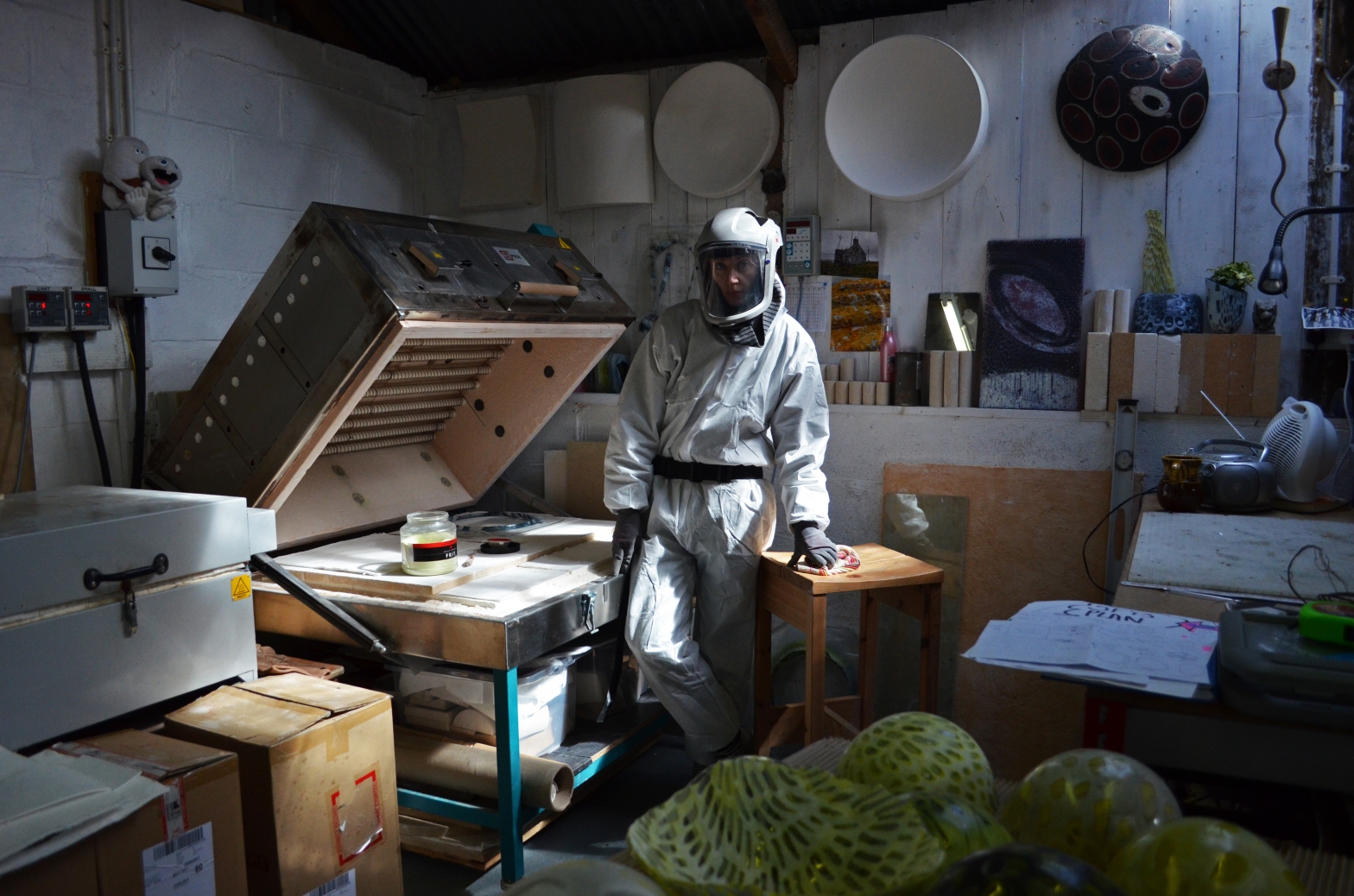
Amanda Simmons on finding her voice through kiln-formed glass. Interview by Prerona Prasad as part of the exhibition Of the Earth: Contemporary Ceramics and Glass from The Fitzwilliam Museum
A good place to start is by asking you about your journey into glass as a medium. I have recently come to the realisation that it is very difficult to imagine careers – creative careers or careers in anything -without having known somebody who does them, or having a sense of how something is made. I’m really interested to find out how you got into glass.
And kiln-formed glass is particularly obscure as well. It’s a relatively new medium. I’ll be celebrating 20 years next year. I left school early and did an apprenticeship with British Telecom at. I didn’t really like full on education. I knew I was good with my hands and liked to make things. The engineering apprenticeship gave me a lovely overview of a whole company and how things work on a bigger scale, as well as the nuts and bolts of actually going out and fixing people’s phones. I was quite a novelty back then, too, because there were no other female engineers.
After I left, I did a biomedical sciences degree. I was interested in a lot of science but didn’t know where to start. No one else in my family had ever gone to university. So I went into a very broad subject and came out with more of a pharmacology degree. I ended up being a clinical perfusionist, running the heart lung machine for cardiac operations. That was in London and I spent eight years in the NHS and private healthcare doing that.
All through this time, I tried every medium possible. I’d gone through everything; painting sculpture, carving, printmaking (which I still do and is still very relevant). I tried everything and I enjoyed everything. I loved the learning and the processes, but nothing caught me. And it was beginning to get really frustrating by about 30. I took a week off and did the stained glass course with an artist called Ray Bradley. One day we touched on this tiny little bit of kiln work, where we just broke up little bits of glass, put them on a tiny circle of glass and melted them. And I was like, ‘Oh my word. What is this? This… this is alchemy.’ It was about the gravity and the movement of it. And coming from that science background and being bit of a sci-fi nerd and, that was it! It took me two months to set up a studio in my mom’s garage. I had found my medium. Alongside working, I did glass at Westminster College. Then I did a postgraduate certificate at Central Saint Martin’s, just to consolidate that learning.
I think that there is a barrier to people engaging with glass and with ceramics, in that they don’t understand how it’s made. I’ve got a very basic definition of what kiln-formed glass is, could you elaborate? WATCH VIDEO
It is interesting how it ties into your previous life in science and the precision that required. How do you find your voice through the unyielding, unwavering laws of physics?
That’s the hard bit, because you have to negotiate with the physical laws at all times. I think that’s what I spent the last five years or so doing; to get to that level where I could achieve what I wanted to. I think that was the move to powders, where I could get a lot more surface interest through layering and blending colours that way. In a way I’ve learned a lot about the medium through teaching. I realised what I’m doing when I’m teaching because it’s you never talk to yourself what you’re doing, you just do it. But when you explain it to someone else, you go, Oh, I actually do that. Because of that even though it’s so I feel talking to students about finding their own voice the same way it’s just trying to understand what I’m actually doing. And the visual way of putting the information down is the only way I can do it. I keep it all in my head and make sense of it. I think but it is still under quite a controlled scientific way I think.
-

A feather from a swallow -
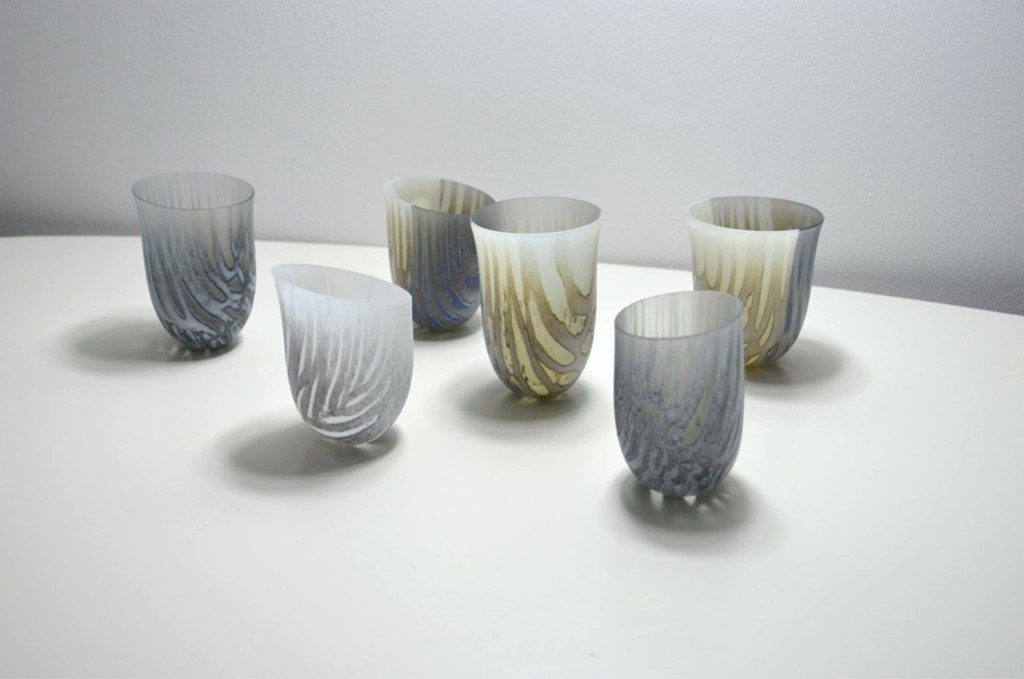
Feather from the Swallows, 2015
Your work Feather from the Swallows (exhibited in Of the Earth) is very much tied down to your studio as a space. I love that. You worked in London for years and then moved to Scotland. Did that cause shifts in your practice.
I don’t actually consider my time in London as having been a working artist. I was learning the skill, making contacts. I made sure I knew what was going on in London, because I knew I was going to be very far away from it. I don’t feel I became that artist until I was here (Corsock, Dumfries and Galloway). I think if we had stayed in London, it would have been much more of a struggle. Creative Scotland have been fantastic. I’ve had some very good help and support from them over the years, even in our local area. We had a Craft Development Officer at the Council as well as an Arts Development Officer. I think there was only one other region in the country that had that and it was in Scotland again. But also landscape, space, quiet, peace, all those things, while being able to have a big studio at home.
The next shift came in 2011. Still based in Scotland, I had my first residency up at Northlands Creative, in Caithness. The landscape was the polar opposite to where we are in Dumfries and Galloway, but just stunning. And that completely changed my practice in terms of confidence, of beginning to absorb those ideas and put them back in the work. I’ve since done a few more residences, and they’ve done the same thing each time.
A ceramicist in the exhibition, Robin Welch, once said, ‘There is no divide between art or craft. You decide to be an artist and you’ll use anything. If marooned on a desert island you’d use driftwood.’ What do you think about that?
It is the medium that is important for me. As much as I love playing with lots of other things, I can’t make it work. I’d love to be a ceramicist. I did an O level. I failed it, unfortunately, because I didn’t put any coursework in. I really wanted to make things in clay but it didn’t work. I tried again, my best friend is a potter, but there is just no connection with it, apart from loving the end product. I much prefer ceramics to glass in this wider sense. And I think that’s why mine is quite subtle as well. There’s a lot of colour in my work now, but that finish and using opaque colours mostly, it’s more ceramic like. So if you were an artist at heart, and you only had to work with driftwood, you would work with it, but it wouldn’t mean that you’re happy with it.
I think if I was limited, yes, I would have to work with something. Printmaking is so much more sustainable and I could do that practice anywhere. My glass practice is rooted in equipment. So I am planning a sabbatical from glass at some point, preferably in Australia, to really focus on the printmaking.
I’ve got to stick to glass whilst I’m here. I was very aware when we first moved to Scotland that I was building a practice that is based on electricity, on chemicals in glass, and the older kind of refractory products that we use, and things like that. So I’ve always tried to minimise how much I make and recycle everything. But when creation and creating stuff is, you know, what makes you get out of bed in the morning, it’s hard. In the future, I don’t want glass to be my full time practice, because I think it’s too much.
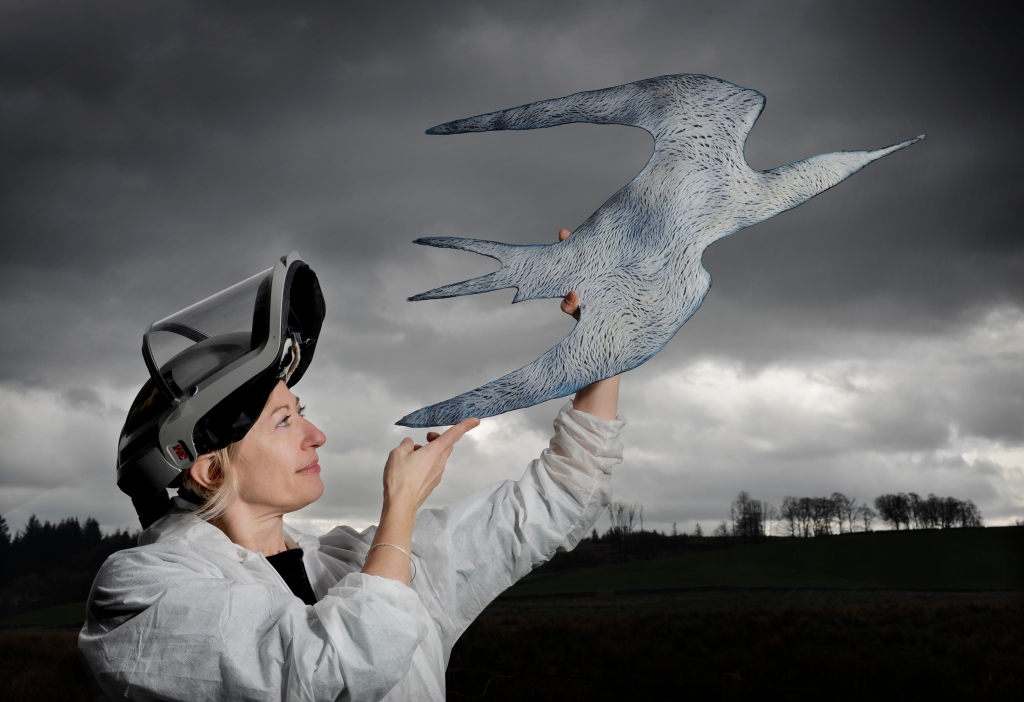
We can’t do an interview at right now without talking about the pandemic. How has it affected you?
I’m afraid I’ve been one of those very lucky ones that has had quite some positive outcomes from it. It’s given me this online teaching, which, as much as I love running around the world teaching, online teaching has enabled so many more people to take courses.
That said, selling craft online is not an easy thing. People want to see it, pick it up if they can. On that side, it’s been quite quiet. But still some kind of big, significant pieces have gone in the last year. So there is still that market.
Looking to the future, is there anything you’d like to say about upcoming projects or anything?
The current obsession is Australian botanicals. And that’s where I’m focused on. Before the pandemic I spent six-seven months teaching and traveling across Australia. I did Perth to Sydney for days on a train just watching this amazing landscape and botanicals. I became obsessed with a particular flower called banksia which is emblematic of a whole lot of history. Colonialism, the horrific treatment of First Nations people, the bushfires, the climate crisis, have all left their traces on this flower. I visited six or seven big botanical gardens and just investigated it as a species. Then I found out how it was used in Aboriginal culture and how that’s changed since it was ‘discovered’ and named after Joseph Banks, a botanist who was a part of Captain Cook’s first voyage. It was quite painful, a lot of this research, and I’m just trying to find a way of bringing that out in the work. Hopefully in the future, I’d be able to go in the middle of nowhere and help and collaborate with First Nations artists and see a different way. But it is all kind of focused around this one plant at the moment.


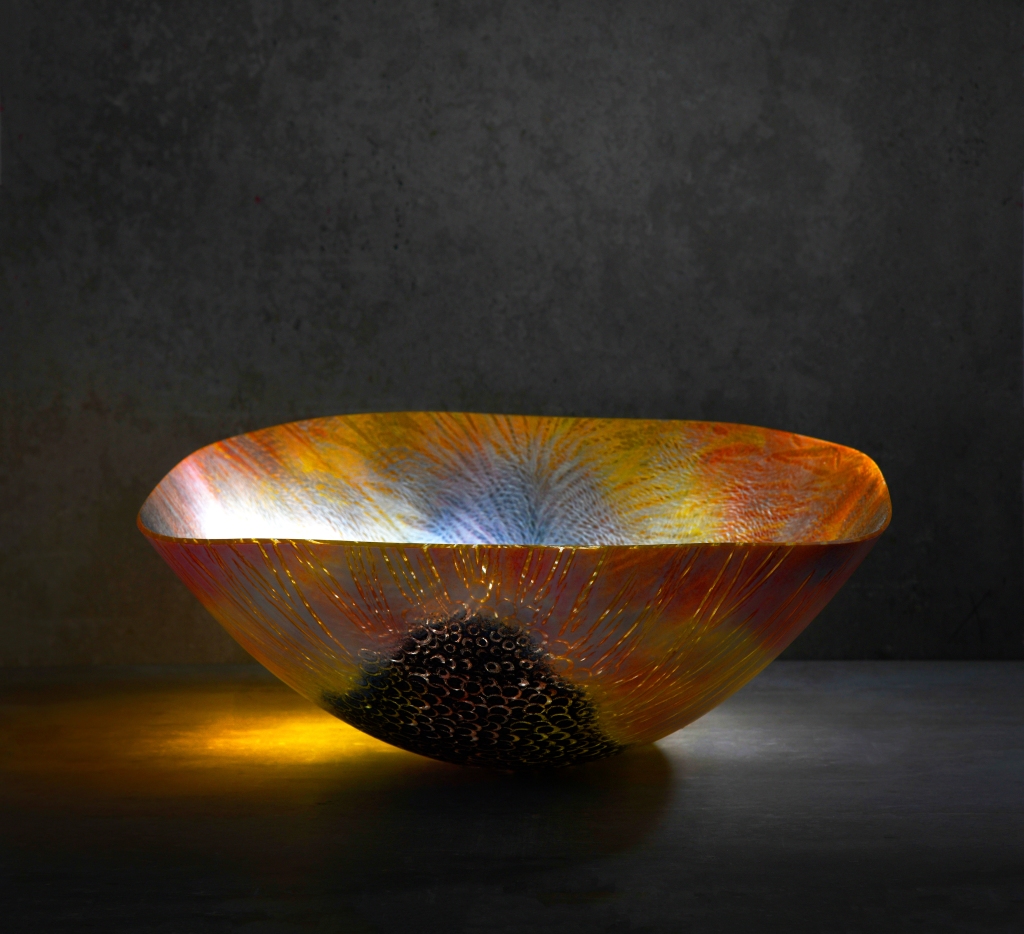
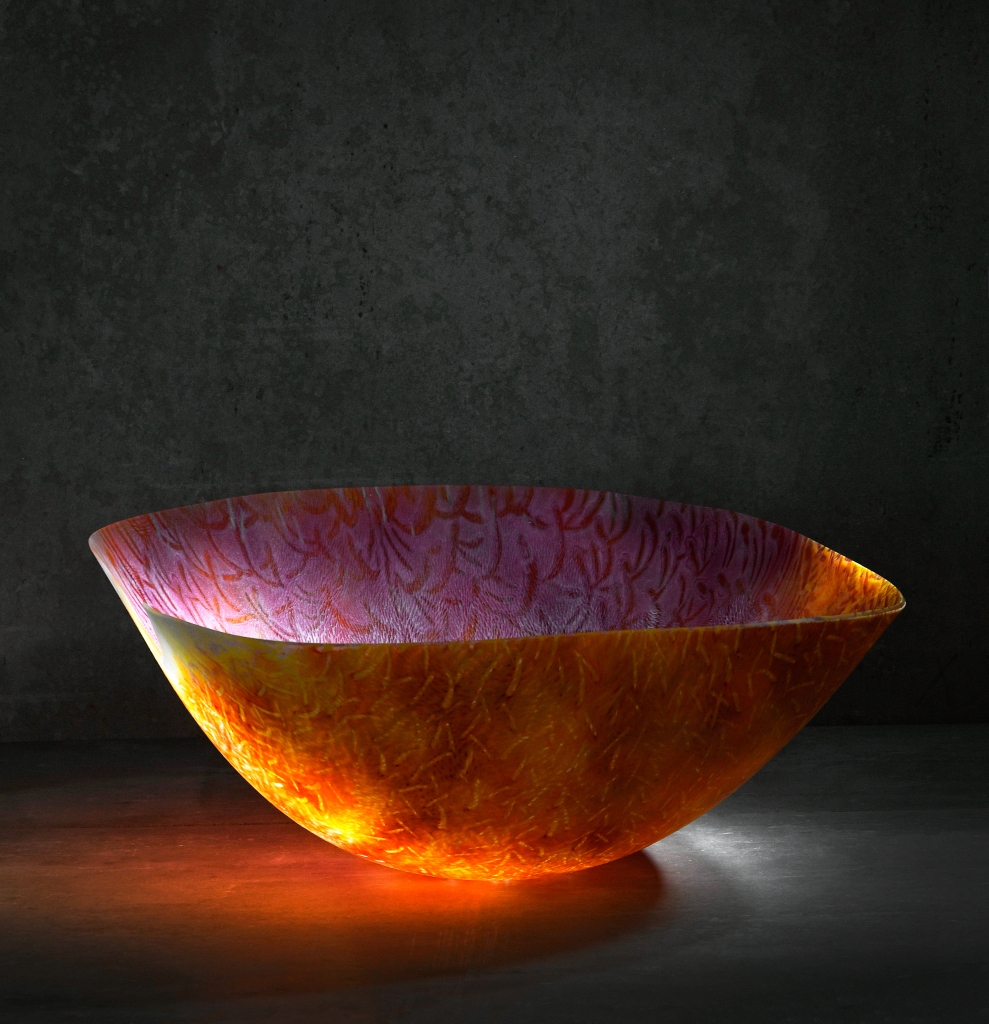
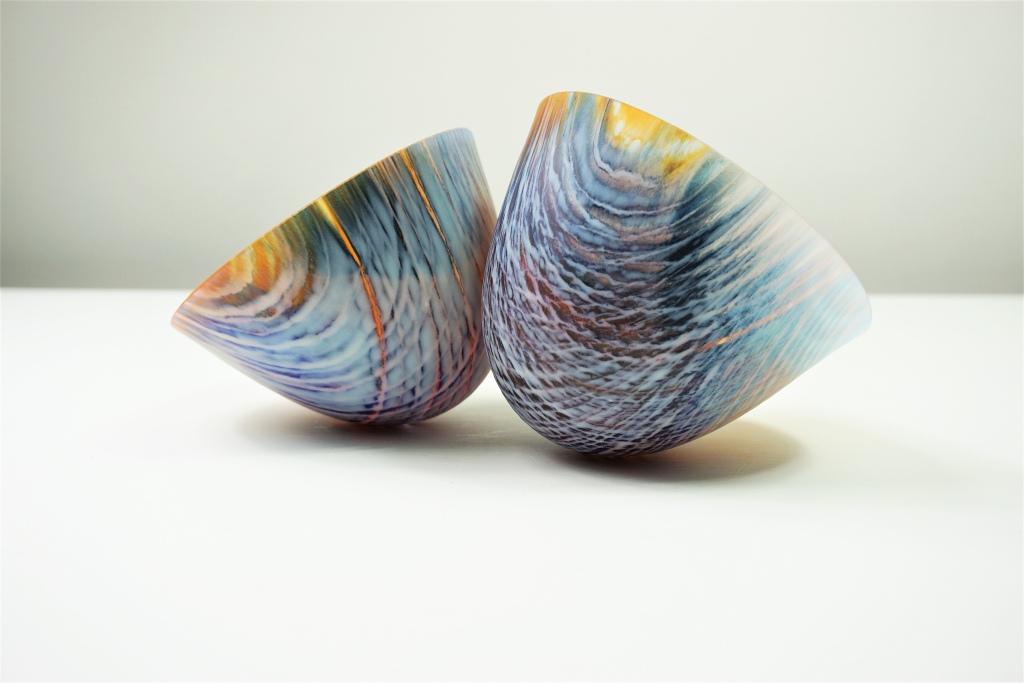
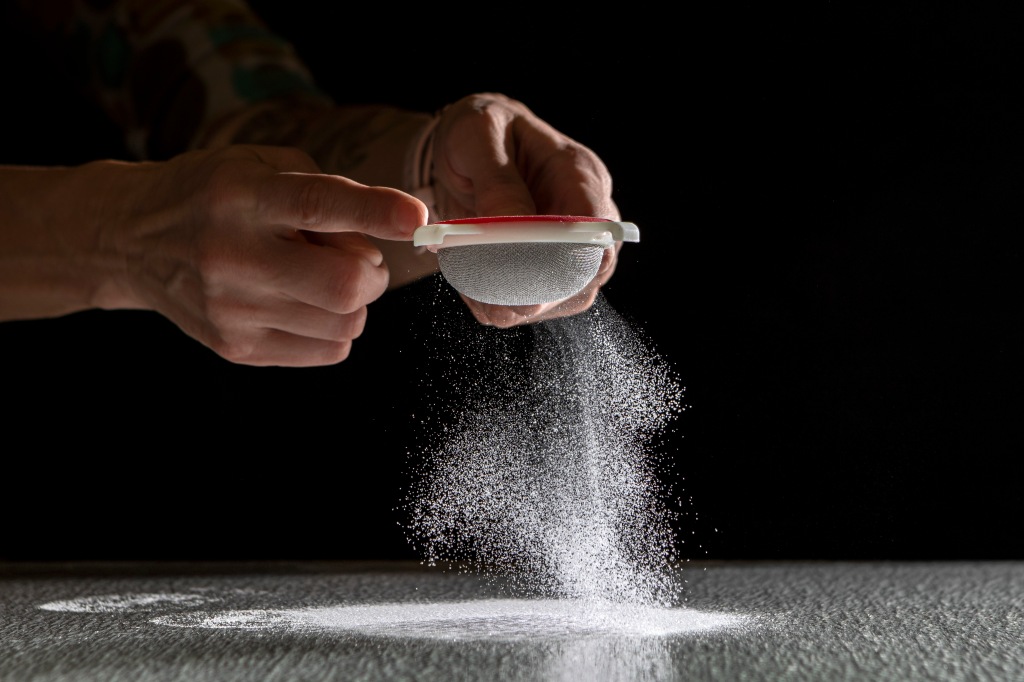
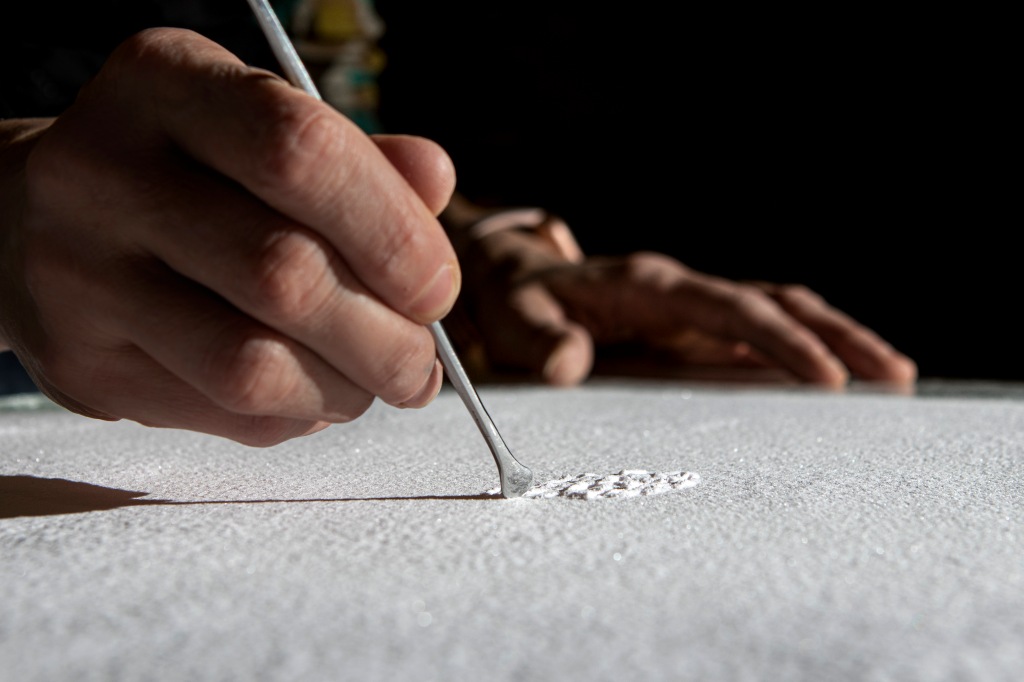
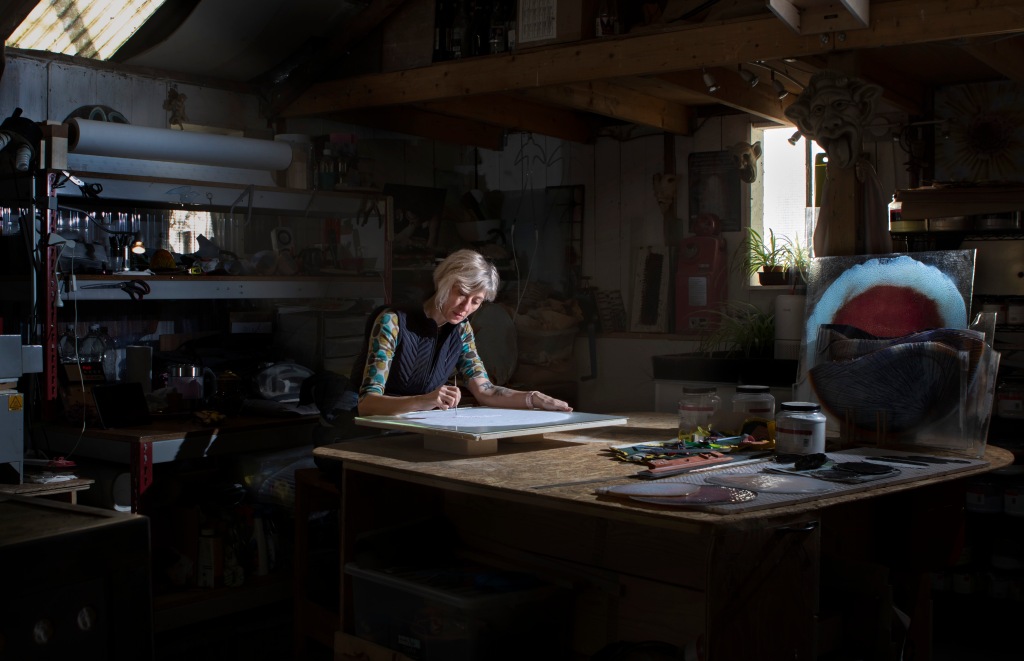






0 comments